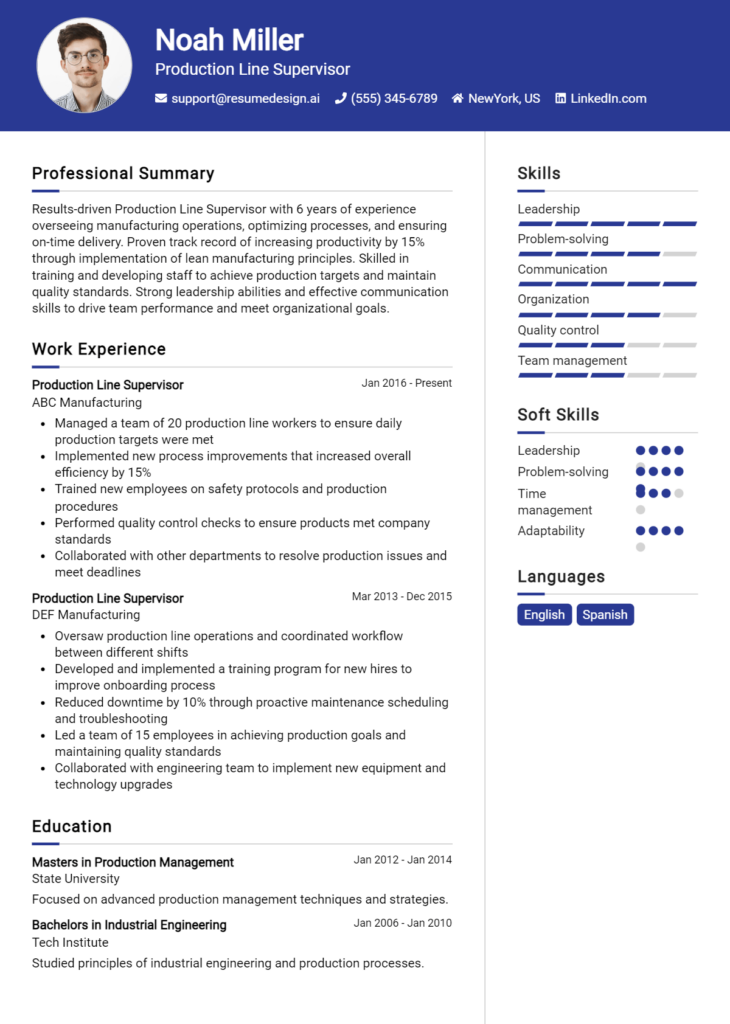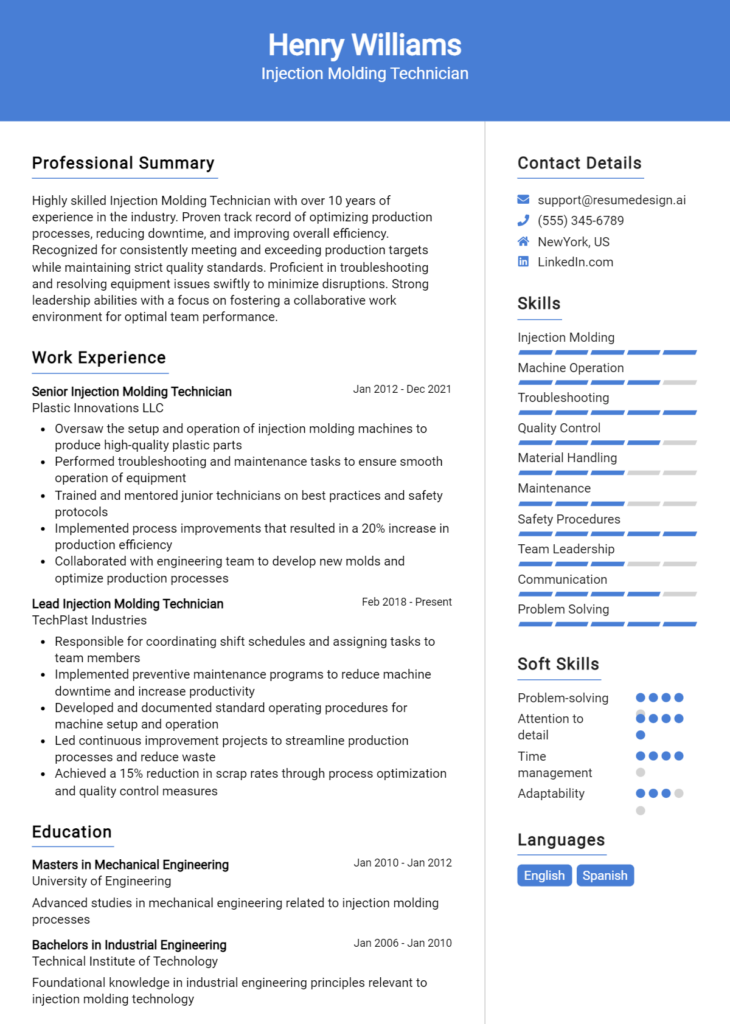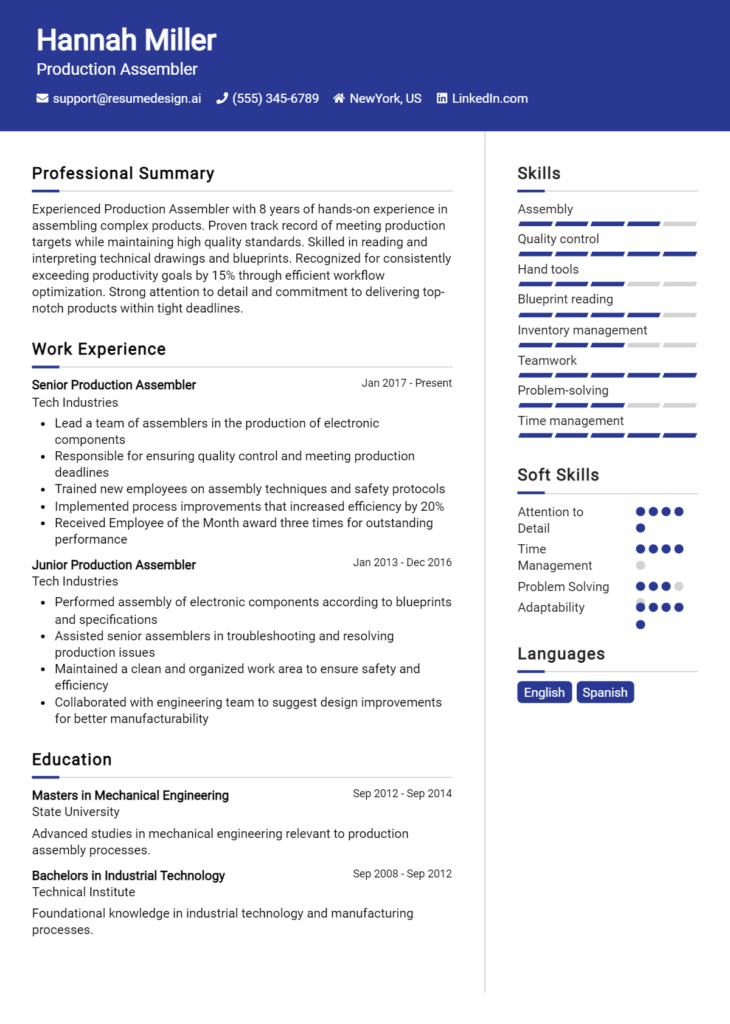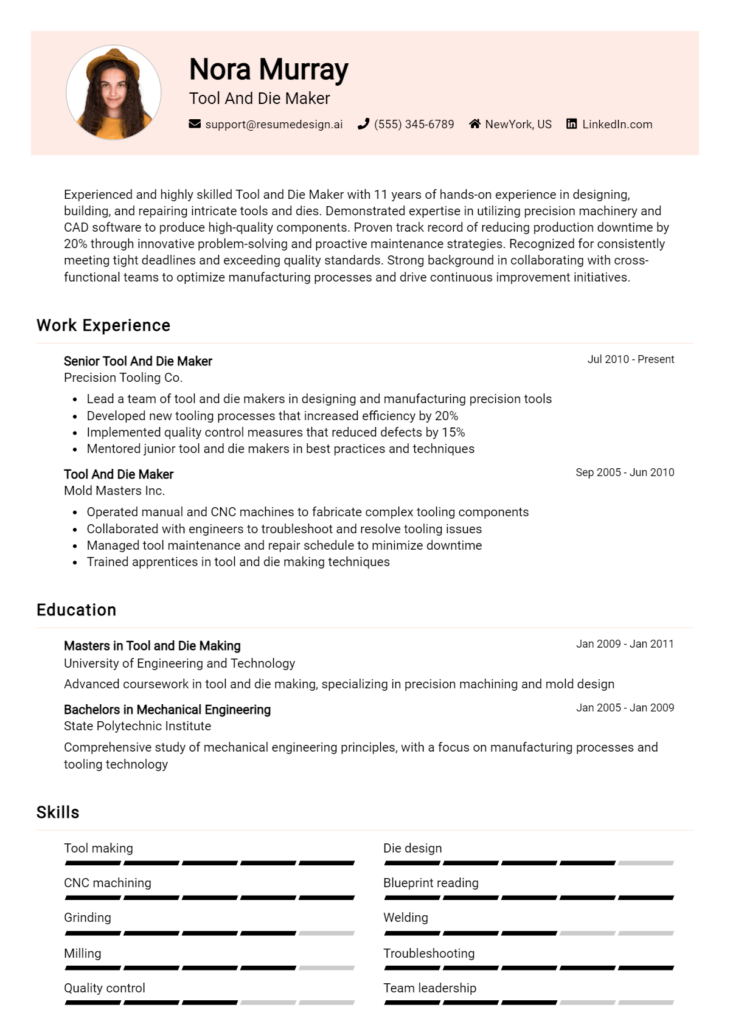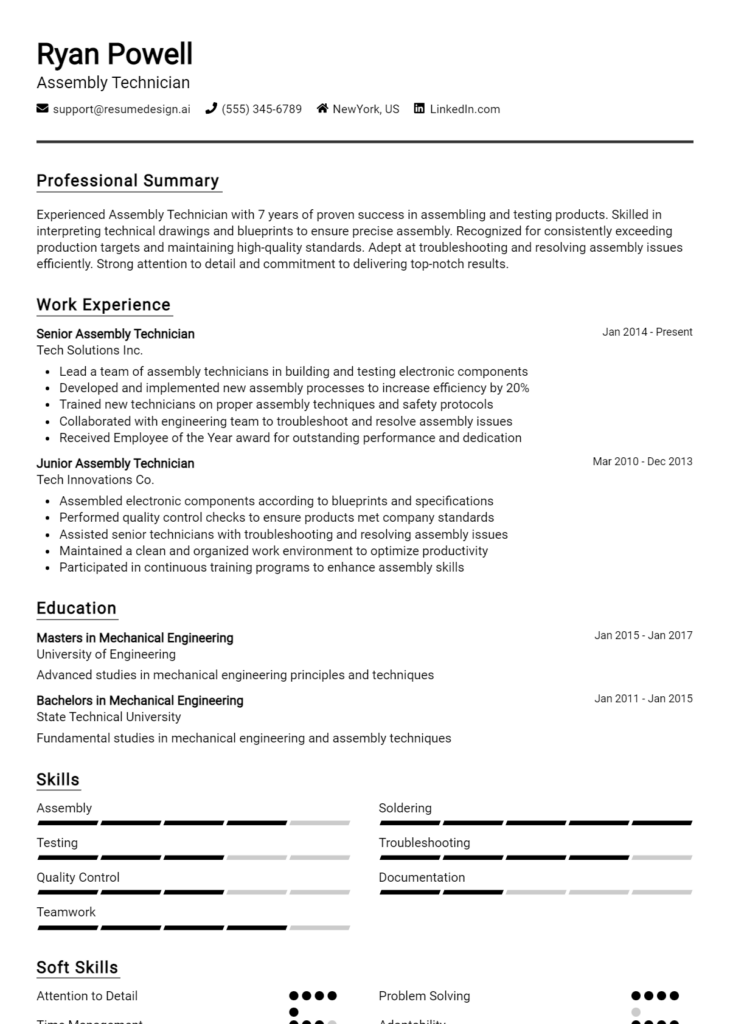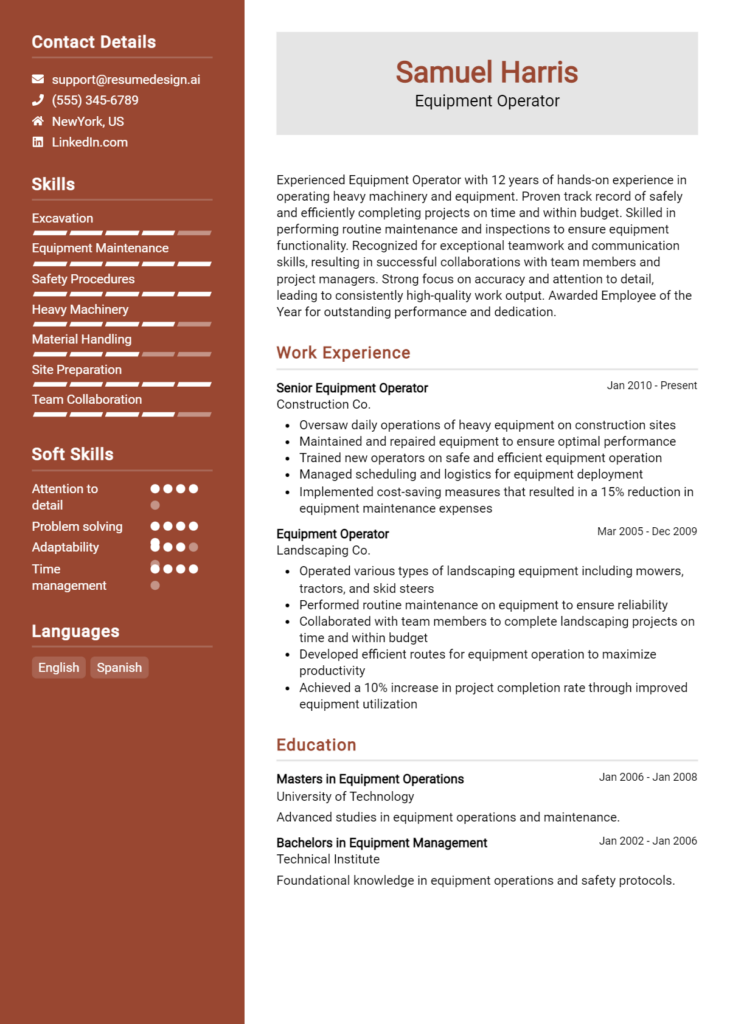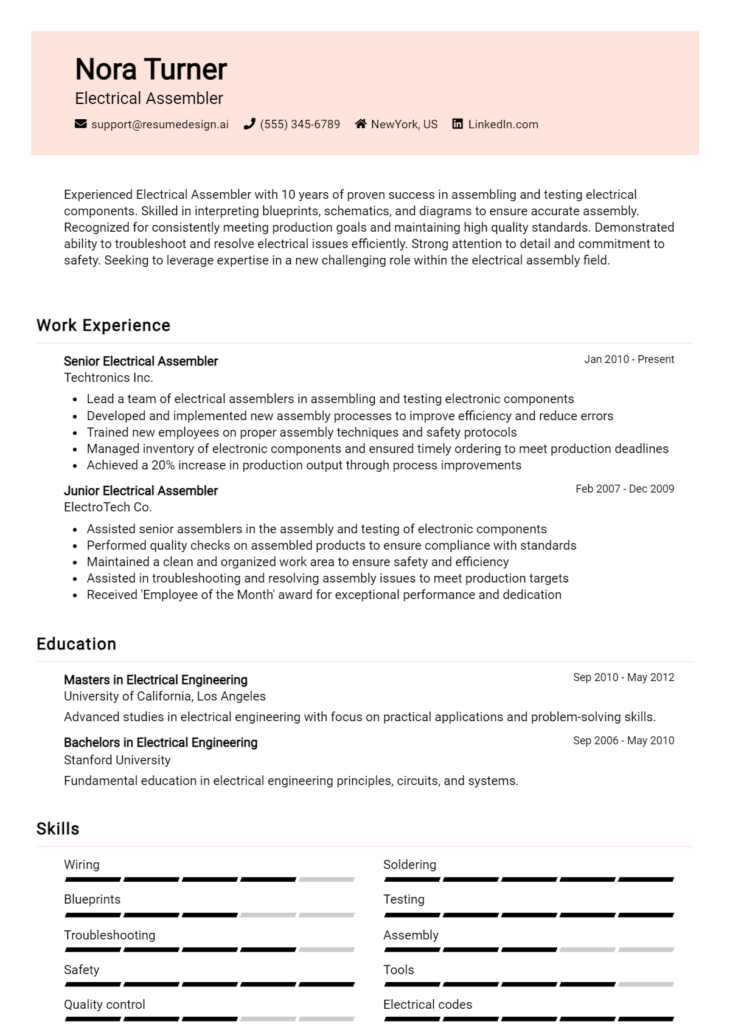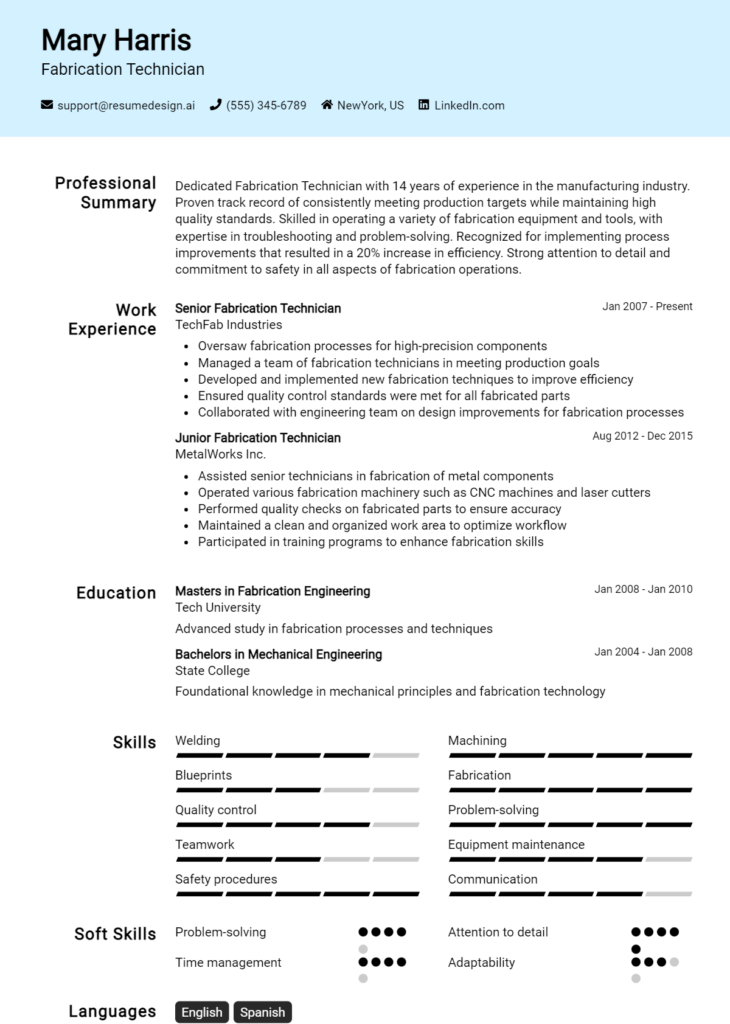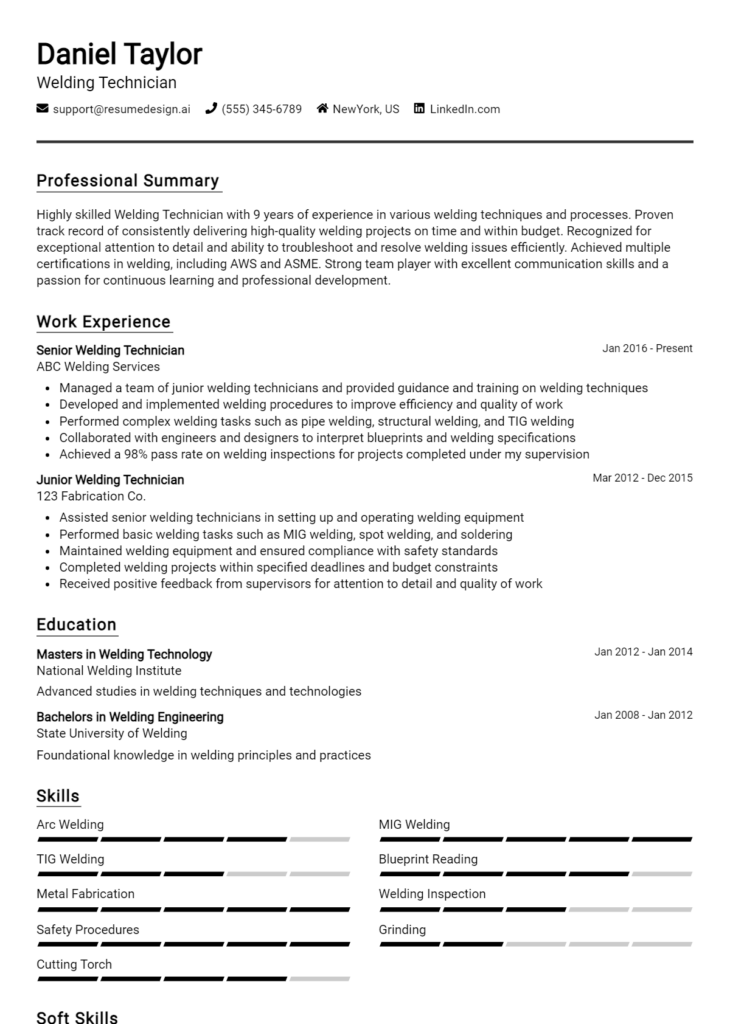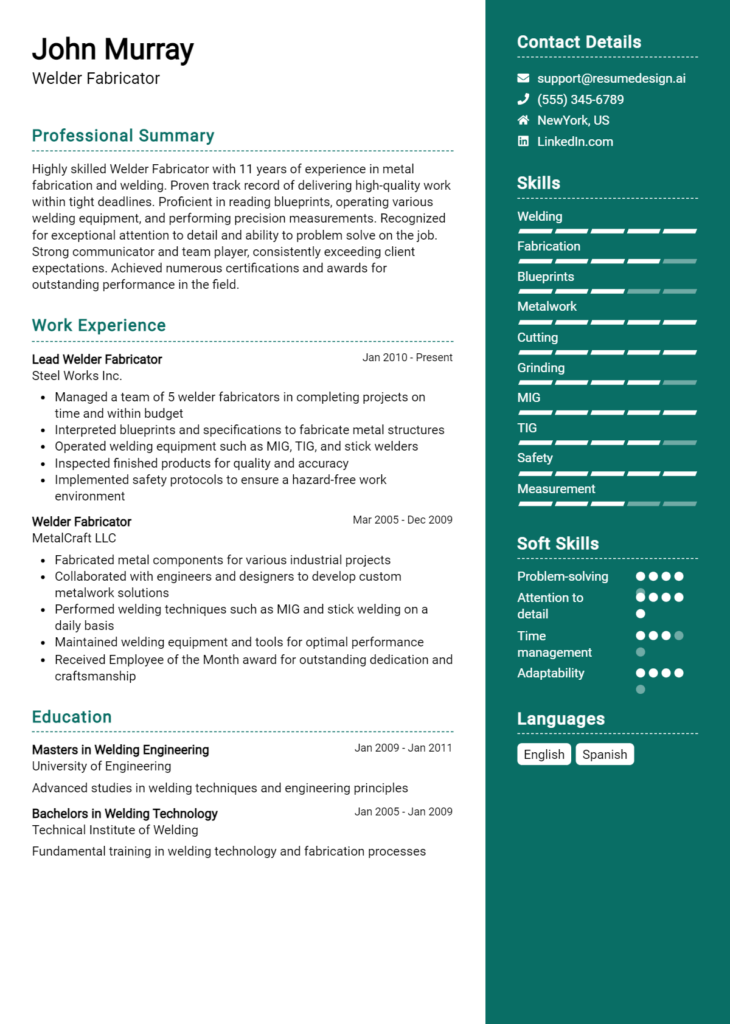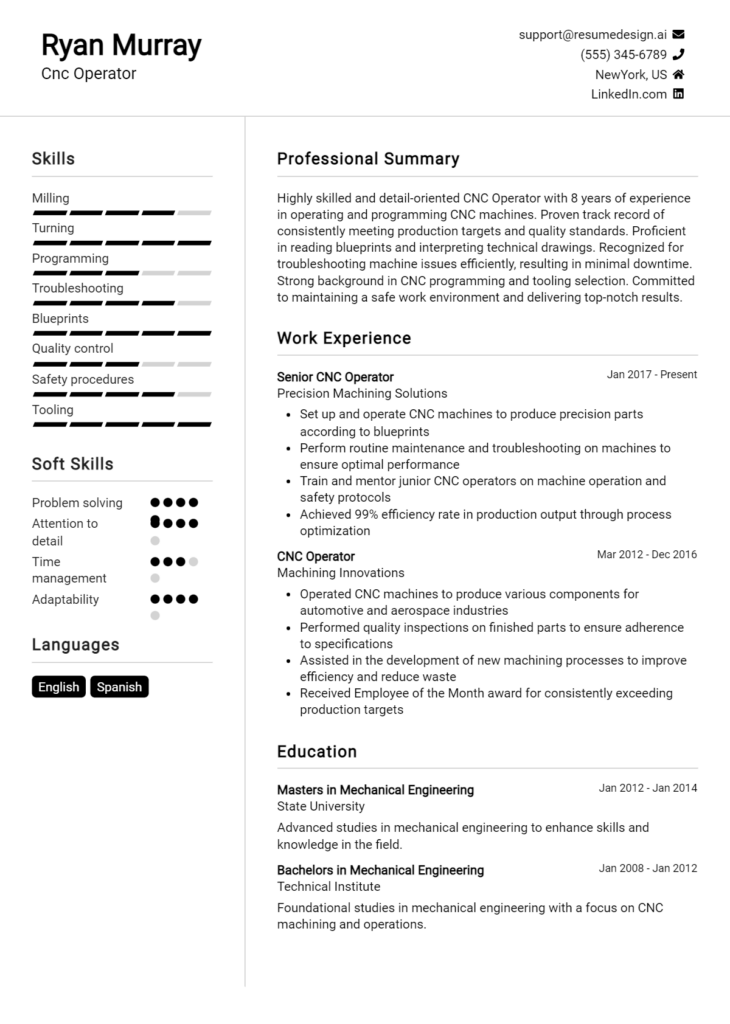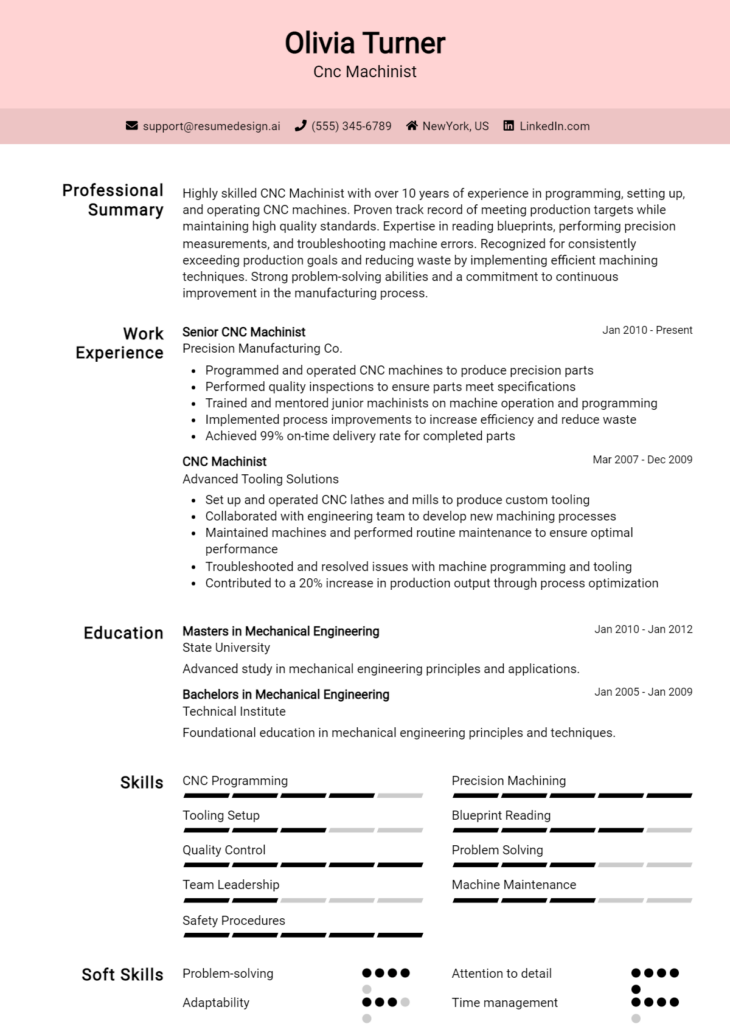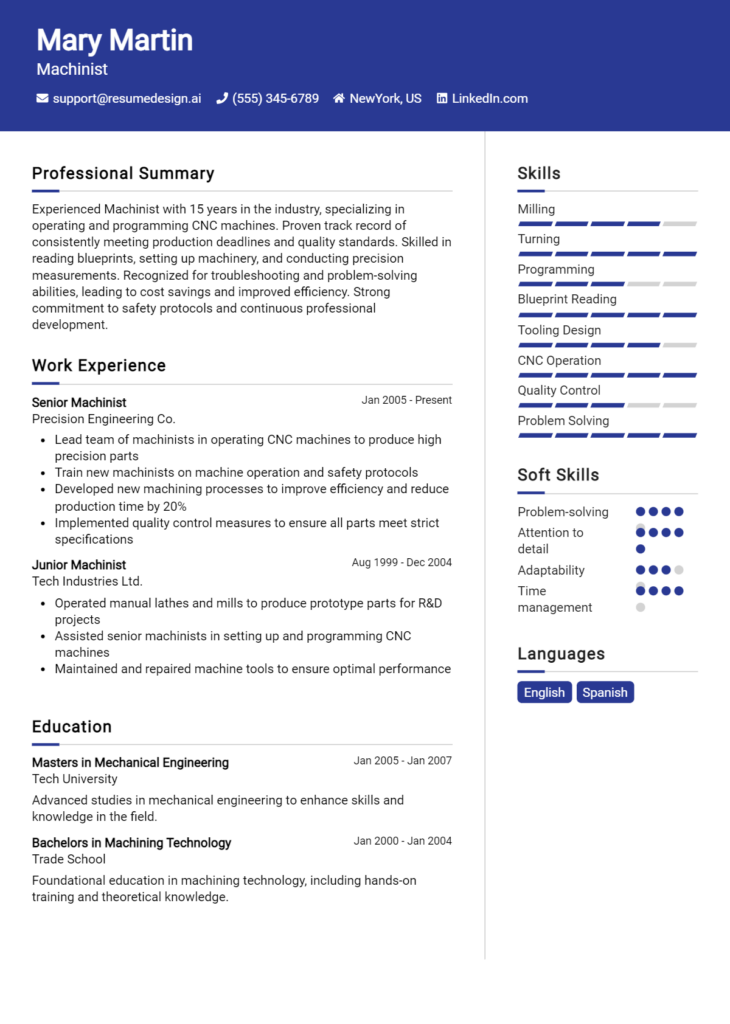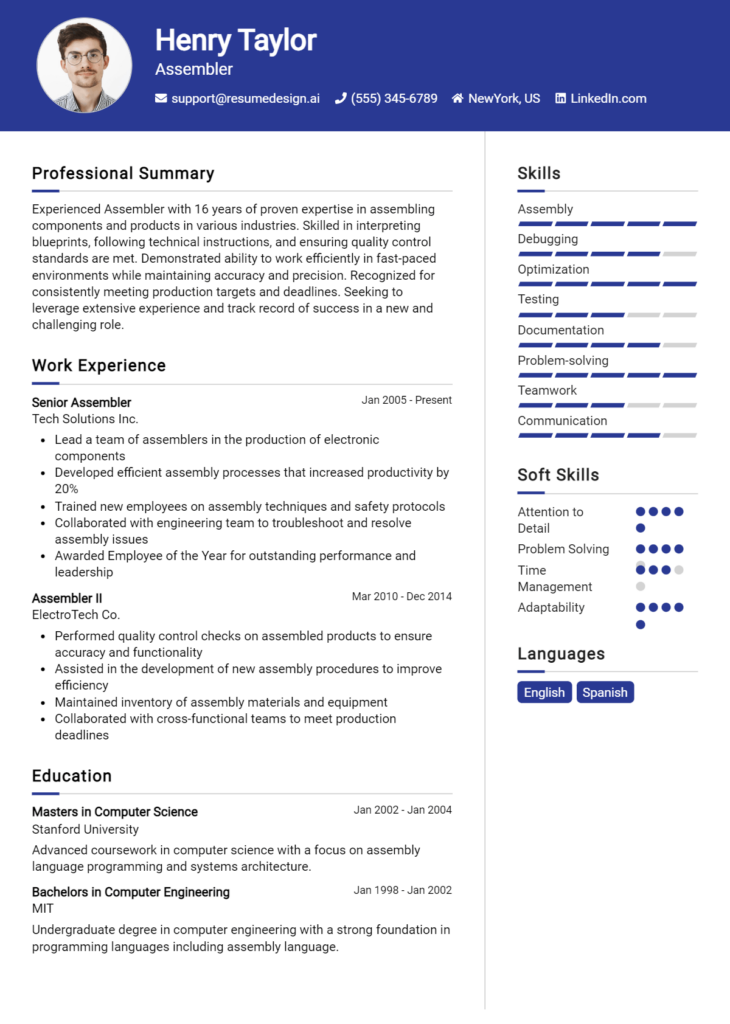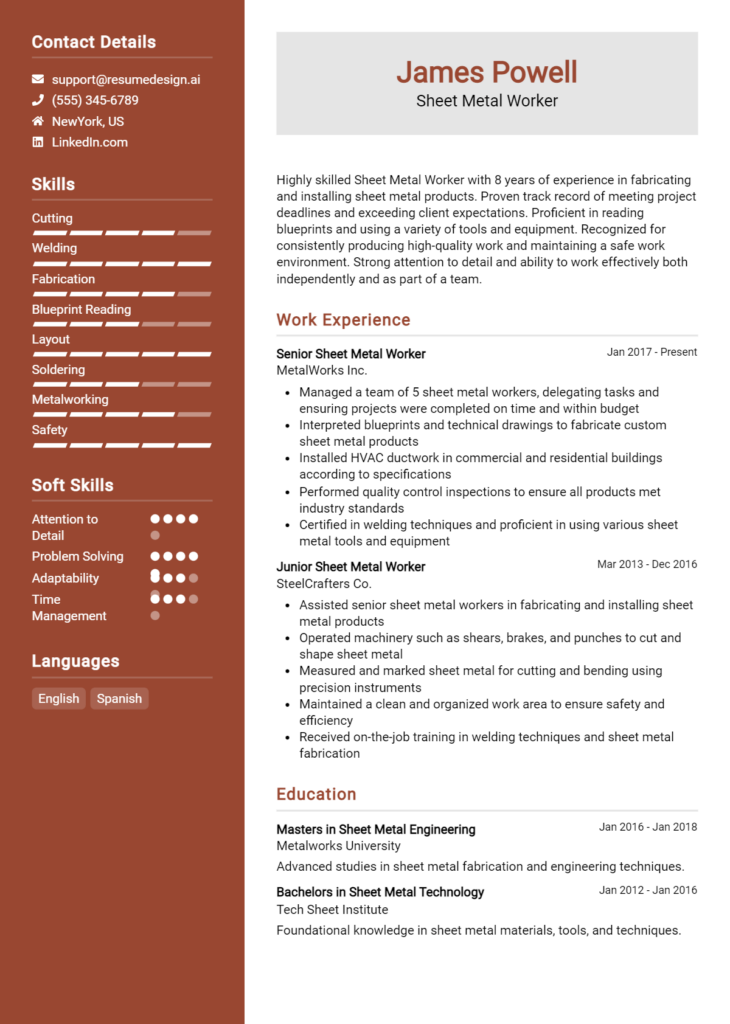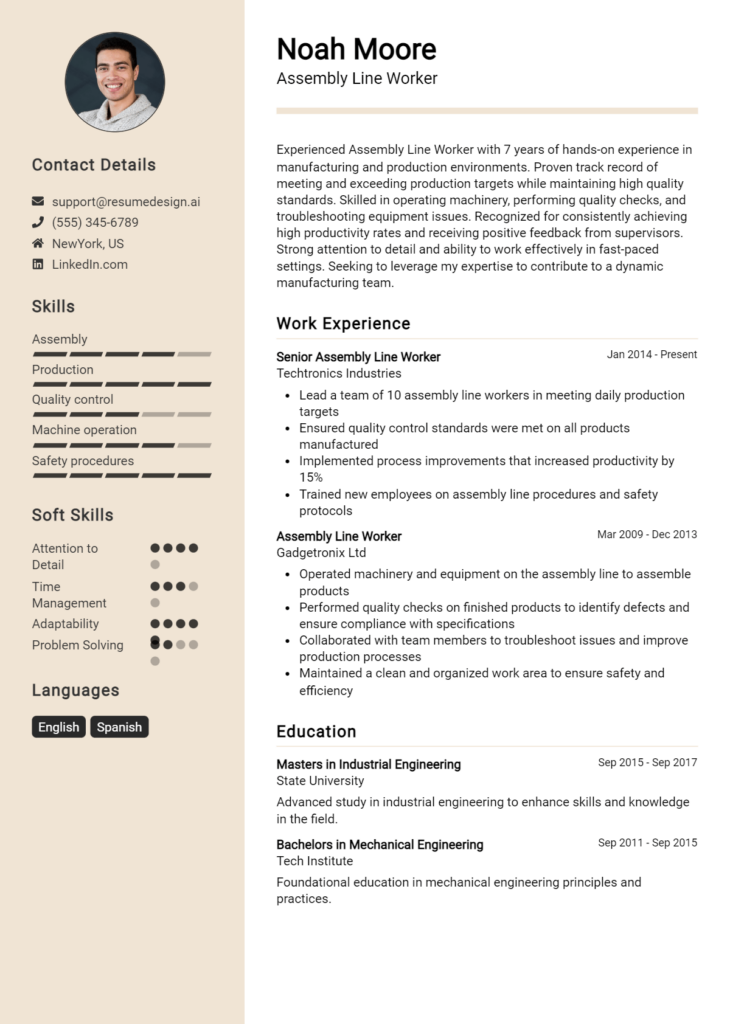Precision Machinist Core Responsibilities
A Precision Machinist is vital in manufacturing, responsible for creating precise components using advanced machinery. Key responsibilities include interpreting blueprints, setting up and operating CNC machines, and conducting quality control checks. This role requires technical expertise, operational efficiency, and strong problem-solving abilities to collaborate effectively across departments like engineering and production. These skills contribute to organizational goals and maintaining high standards. A well-structured resume can effectively showcase these qualifications, enhancing employability.
Common Responsibilities Listed on Precision Machinist Resume
- Interpreting and analyzing technical drawings and blueprints.
- Setting up and calibrating CNC machines for production runs.
- Operating lathes, mills, and grinders to fabricate parts.
- Performing quality inspections using precision measuring instruments.
- Maintaining and troubleshooting machining equipment.
- Programming and modifying CNC machine codes as needed.
- Collaborating with engineers and production teams on project specifications.
- Documenting production processes and maintaining accurate records.
- Ensuring compliance with safety and quality standards.
- Training junior machinists on equipment and best practices.
- Implementing process improvements to enhance efficiency.
High-Level Resume Tips for Precision Machinist Professionals
In the competitive field of precision machining, a well-crafted resume serves as a critical tool for professionals aiming to make their mark. As the first impression a candidate can make on a potential employer, the resume must effectively showcase not only the individual’s technical skills but also their notable achievements in the industry. A strong resume can open doors to interviews and opportunities, highlighting the candidate's unique qualifications and fit for the role. This guide aims to provide practical and actionable resume tips specifically tailored for Precision Machinist professionals, ensuring your resume stands out in a crowded marketplace.
Top Resume Tips for Precision Machinist Professionals
- Tailor your resume to the specific job description by including keywords and phrases that match the employer’s requirements.
- Showcase relevant experience by listing specific machinery or tools you have operated, emphasizing your hands-on skills.
- Quantify your achievements, such as the percentage of accuracy or efficiency improvements you achieved in previous roles.
- Highlight industry-specific skills, including CNC programming, blueprint reading, and quality control processes.
- Utilize a clean and professional format to enhance readability, making it easy for hiring managers to quickly identify your qualifications.
- Include certifications and training relevant to precision machining, such as ISO or OSHA certifications, to demonstrate your commitment to industry standards.
- Use action verbs to describe your responsibilities and accomplishments, creating a dynamic and engaging narrative of your experience.
- Consider adding a summary statement at the beginning of your resume to provide an overview of your qualifications and career goals.
- Keep your resume concise, ideally one page, focusing on the most relevant information that aligns with the job you are applying for.
By implementing these tips, Precision Machinist professionals can significantly enhance their resumes, increasing their chances of landing interviews and securing jobs in this specialized field. A polished and targeted resume not only reflects your capabilities but also demonstrates your dedication to your craft, making a compelling case to potential employers.
Why Resume Headlines & Titles are Important for Precision Machinist
In the competitive field of precision machining, a well-crafted resume headline or title is essential for catching the attention of hiring managers. This brief but impactful phrase serves as a snapshot of a candidate’s qualifications, skills, and experiences, allowing hiring professionals to quickly assess their suitability for the role. A strong headline can differentiate a candidate from others by summarizing their expertise in a way that is both concise and relevant to the specific job they are applying for. By effectively communicating key qualifications in just a few words, candidates can make a memorable first impression that paves the way for further consideration.
Best Practices for Crafting Resume Headlines for Precision Machinist
- Keep it concise: Aim for a headline that is no longer than 10 words.
- Be specific: Use precise terminology related to precision machining.
- Highlight key skills: Incorporate your strongest skills or certifications.
- Tailor to the job: Customize your headline for each specific job application.
- Use action words: Begin with strong verbs to convey your expertise.
- Include measurable achievements: If possible, quantify your accomplishments.
- Focus on your value: Make it clear how you can benefit the employer.
- Avoid jargon: Use clear language that is easily understood by all readers.
Example Resume Headlines for Precision Machinist
Strong Resume Headlines
Detail-Oriented Precision Machinist with 10+ Years of Experience
Certified CNC Machinist Specializing in Complex Component Fabrication
Efficient Precision Machinist with Proven Track Record of Reducing Waste
Skilled Machinist Proficient in Advanced Manufacturing Technologies
Weak Resume Headlines
Machinist Looking for a Job
Experienced Worker in Manufacturing
The strong headlines are effective because they are specific, showcase relevant skills, and highlight the candidate's experience in a way that aligns with the job requirements. They convey confidence and expertise, making a compelling case for the candidate's qualifications. In contrast, the weak headlines lack specificity and fail to communicate the candidate’s unique strengths or contributions. They come across as generic and uninspiring, making it difficult for hiring managers to see the value the candidate could bring to their organization.
Writing an Exceptional Precision Machinist Resume Summary
A well-crafted resume summary is crucial for a Precision Machinist, as it serves as the first impression for hiring managers. This brief yet powerful statement encapsulates the candidate's key skills, relevant experience, and notable accomplishments, allowing them to quickly gauge the applicant's fit for the role. A strong resume summary is concise, impactful, and tailored to the specific job, ensuring it captures the attention of hiring managers and sets the tone for the entire resume.
Best Practices for Writing a Precision Machinist Resume Summary
- Quantify achievements: Use numbers to illustrate your impact, such as production rates or cost savings.
- Focus on skills: Highlight specific machining and technical skills that are relevant to the job description.
- Tailor the summary: Customize the summary for each application to reflect the specific requirements of the job.
- Be concise: Keep the summary brief, ideally 2-3 sentences long, while still conveying essential information.
- Use action words: Start sentences with strong verbs to create a sense of dynamism and proactivity.
- Include relevant certifications: Mention any industry certifications that enhance your qualifications as a Precision Machinist.
- Showcase problem-solving abilities: Highlight instances where you've solved complex machining challenges or improved processes.
- Demonstrate collaboration: Briefly note your experience working effectively in team environments, as collaboration is often key in machining roles.
Example Precision Machinist Resume Summaries
Strong Resume Summaries
Detail-oriented Precision Machinist with over 10 years of experience in CNC programming and tooling optimization. Achieved a 25% increase in production efficiency while reducing waste by 15%, consistently delivering high-quality components to specifications.
Skilled Precision Machinist specializing in both manual and CNC machining, with a track record of reducing cycle times by 20%. Proven ability to interpret complex blueprints and execute precision measurements, enhancing product quality and decreasing rework rates.
Results-driven Precision Machinist with extensive experience in high-volume manufacturing environments. Successfully led a team to implement lean manufacturing techniques, resulting in a 30% reduction in lead time and a 40% increase in output without compromising quality.
Weak Resume Summaries
Experienced machinist looking for new opportunities in manufacturing. I have worked with various machines and tools.
Motivated professional with some machining experience. I am eager to contribute my skills to a new team.
The examples provided highlight the distinction between strong and weak resume summaries. Strong summaries are specific, quantify achievements, and directly relate to the Precision Machinist role, making them impactful and relevant. In contrast, weak summaries lack detail, provide vague descriptions, and fail to demonstrate the candidate's unique qualifications or successes, making them less compelling to hiring managers.
Work Experience Section for Precision Machinist Resume
The work experience section of a Precision Machinist resume is a vital component that demonstrates a candidate's technical skills, leadership capabilities, and commitment to producing high-quality products. This section not only highlights practical experience in operating precision machinery and tools but also emphasizes the ability to manage teams and collaborate effectively in a manufacturing environment. By quantifying achievements and aligning past experiences with industry standards, candidates can present themselves as valuable assets to potential employers, showcasing their readiness to contribute immediately to organizational goals.
Best Practices for Precision Machinist Work Experience
- Detail specific technical skills utilized in previous positions, such as CNC programming, setup, and operation.
- Quantify achievements with metrics, such as production rates, quality improvements, or cost savings.
- Highlight leadership roles, including team management, mentoring, or project coordination.
- Include examples of collaboration with cross-functional teams to solve complex production issues.
- Use industry-standard terminology to demonstrate familiarity with best practices and technologies.
- Showcase experience with various materials and manufacturing processes relevant to the job position.
- Focus on continuous improvement initiatives that led to enhanced operational efficiency.
- Tailor the experience to reflect the job description, emphasizing relevant responsibilities and achievements.
Example Work Experiences for Precision Machinist
Strong Experiences
- Led a team of 5 machinists to achieve a 20% increase in production output over six months by optimizing CNC machining processes.
- Implemented a quality control system that reduced defects by 30%, resulting in annual savings of $50,000.
- Collaborated with engineering to develop new tooling solutions that improved cycle time by 15% across multiple product lines.
- Trained and mentored junior machinists, enhancing their technical skills and reducing training time by 25%.
Weak Experiences
- Responsible for operating machines.
- Worked with team members on various projects.
- Involved in quality checks.
- Completed tasks as directed by supervisors.
The examples provided illustrate the distinction between strong and weak work experiences. Strong experiences highlight specific achievements, quantifiable results, and demonstrate leadership and collaboration, making them impactful and relevant to potential employers. In contrast, weak experiences are vague and lack detail, failing to convey the candidate's contributions or competencies effectively. This contrast underscores the importance of articulating one’s experiences in a way that aligns with the expectations of the industry and the employer's needs.
Education and Certifications Section for Precision Machinist Resume
The education and certifications section of a Precision Machinist resume is crucial for showcasing a candidate's academic background and expertise in machining techniques. This section not only highlights relevant degrees and industry-recognized certifications but also emphasizes the candidate's commitment to continuous learning and professional development. By providing details on relevant coursework, specialized training, and certifications, candidates can significantly enhance their credibility and demonstrate their alignment with the specific requirements of the job role, making them more attractive to potential employers.
Best Practices for Precision Machinist Education and Certifications
- Include only relevant degrees and certifications that directly apply to machining.
- Detail your coursework, particularly any specialized machining or engineering classes.
- Highlight advanced certifications, such as CNC programming or quality control standards.
- Use clear and concise language to present your education and certifications.
- List the most recent education and certifications first to emphasize current knowledge.
- Include any ongoing training or workshops to showcase commitment to continuous learning.
- Utilize industry-standard abbreviations for certifications to enhance professionalism.
- Ensure that all listed qualifications are up-to-date and relevant to the job application.
Example Education and Certifications for Precision Machinist
Strong Examples
- Associate Degree in Precision Machining Technology, XYZ Community College, 2022
- Certified CNC Machinist (NIMS), National Institute for Metalworking Skills, 2023
- Certificate in Advanced Manufacturing Processes, ABC Technical Institute, 2021
- Completed coursework in Geometric Dimensioning and Tolerancing, XYZ University, 2020
Weak Examples
- Bachelor’s Degree in English Literature, ABC University, 2018
- Certification in Basic Computer Skills, Online Course, 2021
- High School Diploma, DEF High School, 2016
- Outdated certification in Woodworking Techniques, 2015
The strong examples are considered effective as they directly relate to the skills and knowledge necessary for a Precision Machinist, including relevant degrees and industry-recognized certifications that demonstrate both expertise and commitment to the field. In contrast, the weak examples illustrate qualifications that are either irrelevant to machining or outdated, thereby failing to enhance the candidate's suitability for the role. Highlighting relevant and current qualifications is essential for making a positive impression on potential employers.
Top Skills & Keywords for Precision Machinist Resume
In the competitive field of precision machining, showcasing the right skills in your resume is essential for standing out to potential employers. A well-crafted resume highlights both hard and soft skills that are crucial for success in this role. Hard skills demonstrate your technical abilities and familiarity with machinery and tools, while soft skills reveal your interpersonal and problem-solving capabilities. Together, these skills paint a comprehensive picture of your qualifications, making it easier for hiring managers to assess your fit for the position. For those looking to enhance their resume, understanding the importance of these skills can lead to better job prospects and opportunities for career advancement.
Top Hard & Soft Skills for Precision Machinist
Hard Skills
- CNC Machining
- Blueprint Reading
- Tool Calibration
- Quality Control Inspection
- Machining Processes (Milling, Turning, Grinding)
- CAD/CAM Software Proficiency
- G-Code Programming
- Precision Measurement Techniques
- Machine Setup and Operation
- Maintenance of Machining Equipment
- Material Properties Knowledge
- Fixture Design
- Tolerance Analysis
- Production Planning
- Safety Protocols Compliance
- Troubleshooting Mechanical Issues
- Statistical Process Control (SPC)
Soft Skills
- Attention to Detail
- Problem-Solving Abilities
- Time Management
- Communication Skills
- Team Collaboration
- Adaptability
- Critical Thinking
- Organizational Skills
- Initiative
- Analytical Skills
- Stress Management
- Dependability
- Creativity
- Leadership Skills
- Conflict Resolution
- Customer Service Orientation
- Continuous Learning Mindset
By focusing on these skills, aspiring precision machinists can effectively convey their proficiency and enhance their work experience, ultimately improving their chances of securing a position in this vital industry.
Stand Out with a Winning Precision Machinist Cover Letter
Dear [Hiring Manager's Name],
I am writing to express my interest in the Precision Machinist position at [Company Name] as advertised on [where you found the job listing]. With over [X years] of experience in precision machining and a solid commitment to quality, I am confident in my ability to contribute effectively to your team. My background in operating CNC machines, coupled with my attention to detail, has equipped me to produce intricate components that meet stringent specifications.
Throughout my career, I have honed my skills in interpreting technical drawings and blueprints, ensuring that each project is executed with precision and efficiency. In my previous role at [Previous Company Name], I successfully managed multiple projects simultaneously while consistently adhering to tight deadlines. My proficiency in various machining techniques, including milling, turning, and grinding, has allowed me to maintain high standards for accuracy and finish, ultimately contributing to improved production rates and reduced waste.
I am particularly drawn to [Company Name] because of its reputation for innovation and excellence in the industry. I admire your commitment to leveraging advanced technologies and methodologies to enhance product quality. I am excited about the opportunity to bring my expertise in precision machining to your esteemed organization and collaborate with your talented team to drive continuous improvement in manufacturing processes.
Thank you for considering my application. I look forward to the possibility of discussing how my skills and experiences align with the goals of [Company Name]. I am eager to contribute to your team and help maintain the high standards that you are known for in the machining field.
Sincerely,
[Your Name]
[Your Contact Information]
Common Mistakes to Avoid in a Precision Machinist Resume
When crafting a resume for a Precision Machinist position, it's crucial to present your skills and experiences clearly and effectively. However, many candidates make common mistakes that can hinder their chances of landing an interview. By avoiding these pitfalls, you can create a resume that accurately reflects your qualifications and grabs the attention of hiring managers.
Focusing Too Much on Job Duties: Instead of listing generic job duties, highlight specific achievements and contributions that demonstrate your expertise and impact in previous roles.
Using Technical Jargon Excessively: While technical language is important, overusing jargon can alienate hiring managers who may not be familiar with specific terms. Strive for clarity and balance.
Neglecting Quantifiable Results: Failing to include numbers or metrics can make your accomplishments seem less impressive. Always quantify your achievements, such as “reduced production time by 20%.”
Ignoring Relevant Certifications: Precision machinists often require specific certifications. Leaving these out can make your resume less competitive. Always include relevant training and certifications.
Poor Formatting: A cluttered or overly complicated format can make your resume difficult to read. Use clear headings, bullet points, and sufficient white space for better readability.
Listing Irrelevant Experience: Including unrelated work experience can dilute your resume's impact. Focus on positions and skills that directly relate to precision machining.
Omitting Soft Skills: While technical skills are crucial, soft skills like teamwork, communication, and problem-solving are equally important. Make sure to include them where relevant.
Failing to Tailor the Resume: Sending the same resume for multiple job applications can lead to missed opportunities. Tailor your resume for each job by incorporating keywords and skills mentioned in the job description.
Conclusion
As a Precision Machinist, your skill set is critical in the manufacturing and engineering sectors, where precision and attention to detail are paramount. Throughout this article, we have explored the essential competencies required for the role, including proficiency in operating various machining tools, an understanding of blueprints and technical drawings, and the importance of maintaining high-quality standards.
Moreover, we discussed the significance of continuous learning and adapting to new technologies that enhance productivity and precision in machining processes. Networking within the industry and seeking certifications can also provide a competitive edge in your career.
To ensure your resume reflects your qualifications effectively, take a moment to review it. Highlight your technical skills, relevant experiences, and any certifications that set you apart from other candidates.
To assist you in this process, consider utilizing valuable resources such as resume templates, which provide a professional layout; the resume builder, which guides you step-by-step in creating a standout resume; resume examples for inspiration; and cover letter templates to help craft a compelling introduction to your application.
Taking the time to refine your resume can make a significant difference in your job search. Start today and showcase your expertise as a Precision Machinist!


